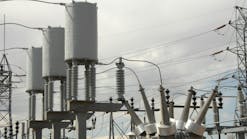Phoenix Air Unmanned Completes 13,000 miles of BVLOS Utility Inspections
Phoenix Air Unmanned, LLC (PAU) crossed the 13,000-mile mark of utility transmission line inspection flights for Xcel Energy last week. The mileage total is another milestone for a program designed to build upon traditional inspection methods in the utility industry and advance beyond visual line of sight (BVLOS) Uncrewed Aircraft Systems (UAS) operations in the National Airspace System. Flights began in 2019 and have been flown annually during spring and summer months with 2021 accounting for 5,300 miles alone.
The UAS inspection flights are conducted under the Xcel Energy certificate of waiver authorizing BVLOS flights without the requirement for visual observers along the route of flight. The waiver allows for use of technology as a means of airspace surveillance and authorizes an operational area spanning 18,000 miles of Xcel Energy transmission infrastructure. Xcel was first granted the two-year approval in 2019. Following two years of successful operations and a safety assurance assessment by the Federal Aviation Administration (FAA), a duplicate two-year waiver was applied for and granted in the fall of 2021.
Getting to the point of repeatable and scalable UAS inspection flights fell under a stepwise approach of proving technology and operational concepts. In 2018 Xcel Energy was granted a site-specific waiver - limited to a 30-mile set of transmission line requiring the use of visual observers. The company worked with industry partners from L3Harris, Northern Plains UAS Test Site, Phoenix Air Unmanned, LLC and Capital Sciences to build a scalable BVLOS inspection program. Multiple 2018 test events were held along the 30-mile stretch, ultimately validating the concept of operations, and leading to the datasets presented to the FAA for the 18,000-mile approval.
“In 2015 we piloted the initial UAS introductory flights for Xcel which led to scaling the program over thousands of circuit miles,” said Will Lovett, Managing Director of Phoenix Air Unmanned. “What was once a few miles of inspections a day has grown to an average of 40 miles per day, with the highest being 124 miles by a single aircraft and crew. Much of the utility industry continues to wait on the FAA to open regulations that would provide this level of efficiency, but this is a program that has been on the leading edge of regulatory approvals since 2018.”
The inspection flights capture high resolution imagery of the transmission line infrastructure. Onboard the aircraft are two Phase One IXM-100 cameras, providing coverage of the transmission structure and utility right-of-way. PAU has captured over 3,000,000 100-megapixel photographs since the program began. Imagery is organized and delivered to eSmart Systems for analysis. The Norwegian-based data analytics firm uses AI technology to assess each image for system cataloging and fault detection.
Xcel Energy’s Brian Long has been with the Xcel UAS BVLOS program since its inception and has remained focused on generating actionable intelligence from the inspection flights. “The imagery coming from the UAV is impressive. The flights themselves are a balance of creating efficiency without sacrificing image quality,” said Long. “The high-resolution datasets we’re able to put into the eSmart inspection tool provide meaningful results to stakeholders within Xcel and we’re able to inspect large portions of the system on an annual basis. Ultimately, we will have a repeatable inspection method capable of helping increase transmission system reliability.”
The Xcel Energy waiver authorizes the use of aircraft from two separate manufacturers to fly the inspection flights. The Freefly Systems Alta X performed over 10,000 inspection miles alone. The quad-rotor platform with inspection cameras comes in under 55lbs and can fly just over 30 minutes. Flights are planned utilizing Xcel Energy provided structure locations as individual flight waypoints. Mission plans are uploaded to the Alta X and average around nine minutes per flight. The aircraft is never recovered at its initial takeoff location, but instead downrange by a second flight crew located adjacent to the transmission line.
“Freefly manufactures a reliable aircraft. When we started the approval process with the FAA, we were able to come to the table with comprehensive Freefly-provided engineering and test data to supplement the beyond visual line of sight waiver request," stated William Wheeler, Director of Operations for Phoenix Air Unmanned, LLC. “After accruing 530 flight hours at nine minutes per flight in the real world, aircraft reliability has been proven beyond bench testing.”
As part of the Xcel Energy waiver’s expansive geographic approval, beyond visual line of sight flights have spanned Michigan, Wisconsin, Minnesota, North Dakota, South Dakota, Colorado, Kansas, Oklahoma, Texas, and New Mexico. Annually flight crews have started in Wisconsin in the spring and work their way down into southeastern New Mexico by fall.
“We are very proud of our accomplishments covering this much ground with unmanned aircraft,” said Tom Stegge, UAS program manager for Xcel Energy. “Without regulatory enablement, many inspection programs place as many personnel and aircraft in the field as possible. Unmanned aircraft inspection flights minimize the manpower required for these programs and have managed to cover over 70% of our 18,000-mile transmission network – utilizing a single aircraft and flight crew.”
PAU and Xcel Energy recognize the success of the program is only a step to standardized regulatory enablement. Both organizations participated in the Federal Aviation Administration’s beyond visual line of sight Aviation Rulemaking Committee (ARC) which formed in June 2021. Will Lovett says many of the concepts and lessons learned from thousands of miles of BVLOS inspection flights were offered in committee discussions and are reflected in the final published ARC report.
“Every regulatory approval advances the UAS industry in the United States. Whether the approval is site-specific or as wide as 18,000 miles, each approval drives the regulatory process towards a standardized format. The work of the Xcel BVLOS program proves safe, effective UAS operations can be scaled to support the needs of the utility industry as long as there is support from our federal regulators. This team continues to be on the leading edge of complex operations with the intention of advancing beyond the bounds of Part 107,” said Lovett.


